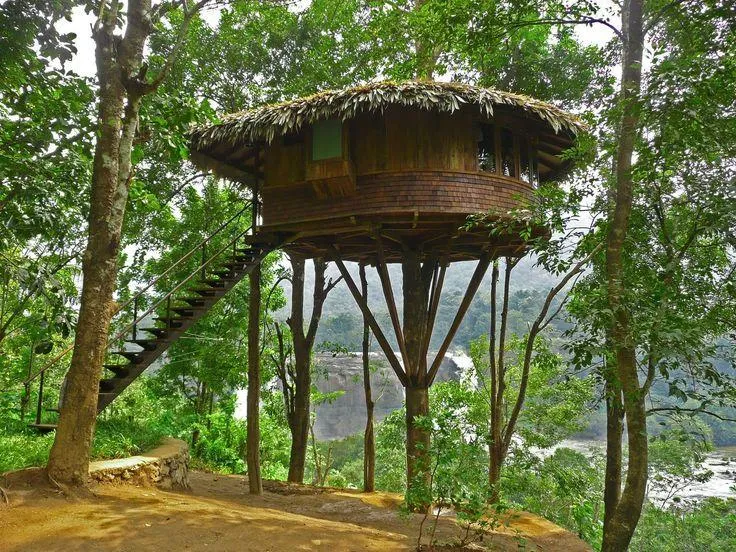Everything You Need to Know About Growing Small Indoor Trees
If you’re looking to add some greenery to your indoor spaces but don’t have room for a large tree, small indoor trees are a great option. They can provide visual interest without taking up too much space. In this article, I’ll cover the most popular types of small indoor trees, requirements for care, and tips for successful growth.
Popular Varieties of Small Indoor Trees
Here are some of the best indoor tree varieties to consider:
- Dwarf umbrella tree: Also known as schefflera, this lush tree grows well in low or medium light. Its arched leaves give it a graceful appearance. It’s very forgiving of mistakes and tolerates a wide range of conditions.
- Miniature bonsai: Perfect for those with limited space, bonsai trees come in many varieties but are intentionally kept small through pruning. They require daily care and specialized techniques to maintain their miniature proportions.
- Dwarf date palm: With its slender trunk and fan-shaped fronds, the date palm thrives in bright, indirect light. It’s drought tolerant once established. Water when the topsoil is dry.
- Dwarf lemon tree: In addition to its attractive glossy leaves, this tree produces small, sweet lemons. Provide it with full sun for fruiting. Fertilize during the spring and summer growing seasons.
Light and Temperature Needs
Proper lighting is essential for small indoor trees to photosynthesize and remain healthy. Most varieties do best in medium to bright indirect light, away from direct sun or spots that may get too hot. Temperature should be kept between 60-80°F. Placing a tree near a sunny south or west-facing window is usually sufficient.
From my experience, dwarf umbrella trees and date palms tolerate lower light conditions better than others. But all trees will grow and leaf out more with increased sunlight. Meanwhile, lemon trees demand the brightest conditions to fruit well.
Watering and Humidity
Like outdoors, indoor trees need regular water to thrive. The soil should be allowed to dry out slightly between waterings, then water thoroughly until it drains freely from the drainage holes. Overwatering is a leading cause of indoor tree death.

Check soil moisture daily by sticking your finger an inch into the soil. Water when it’s dry. Wilting or drooping leaves indicate underwatering. Pebble trays or humidifiers can raise the ambient humidity which many varieties prefer.
Fertilizing and Repotting
During the spring and summer growing season, a balanced liquid houseplant fertilizer applied monthly keeps indoor trees healthy. Follow label directions. Repotting is also important as trees outgrow their pots. Signs it’s time include roots growing from the drainage holes.
Choose a pot with fresh soil that’s only 1-2 inches larger in diameter. Disturb the roots as little as possible when transplanting. Good drainage is critical to prevent root rot. Standing water is the enemy of indoor trees.
Common Challenges and Their Solutions
Pests and diseases may occasionally threaten your indoor trees. Here are some potential issues and what to do:
- Spider mites: Tiny spider-like pests cause leaf stippling. Wipe leaves with soapy water or use an insecticidal soap spray.
- Mealybugs: Fluffy white spots on leaves and stems secrete honeydew. Wipe them away with cotton balls dipped in rubbing alcohol.
- Root rot: Wet, soggy soil causes brown mushy roots. Improve drainage, remove damp soil and trim rotting roots before replanting in fresh soil.
- Leaf drop: Could mean underwatering, overwatering, low humidity or light. Adjust care and it may regrow leaves if the problem is fixed.
Preventing problems is easier than treating them. Maintaining consistent growing conditions suits indoor trees best.

Pruning and Shaping Your Indoor Tree
Occasional pruning keeps indoor trees looking tidy and encourages bushier growth. Trim off damaged, diseased or crossing branches. You can also shape the overall form. Some varieties like umbrella trees and palms don’t require much shaping.
Meanwhile, miniature bonsai benefit from daily pruning, twisting wires and pinching leaves to maintain their small size and formal styles. This takes patience and a delicate touch.
Creating an Ideal Home for Your Indoor Tree
Proper placement is key. Near east, south or west-facing windows provides morning and afternoon sunlight. Rotate trees periodically for uniform growth. Pedestal pots or plant stands elevate trees for better viewing.
A tabletop, desk, bookshelf or other furniture top provides a miniature forest effect in small spaces. For larger specimens, treescaping an entryway, hallway or patio adds living greenery.
To sum up, small indoor trees can totally transform interiors, basically providing a breath of fresh air. I hope these tips help you select the perfect variety and give it the care it needs to thrive indoors for many years. Kinda let me know if you have any other questions! Happy growing.

Top Small Indoor Trees for Your Home
| Name | Height | Water | Light | Care |
|---|---|---|---|---|
| Chinese Evergreen | 3-6 feet | Moderate | Low to medium | Easy |
| Dwarf date palm | 3-6 feet | Moderate | Medium to bright | Easy |
| Dwarf umbrella tree | 4-6 feet | Moderate | Medium | Easy |
| Ficus tree | 3-6 feet | Moderate | Medium to bright | Easy |
| Money tree | 3-6 feet | Moderate | Medium to bright | Easy |
FAQ
-
What types of small indoor trees are popular choices?
Some common indoor trees folks pick are things like bamboo palm, dwarf date palm, lemon buttonwood or fiddle-leaf fig. Basically, plants that don’t get too gigantic but add a bit of greenery to the home.
-
How big do these trees get and how long will they live?
Size and lifespan can vary a fair amount depending on the tree. At the same time, the most suitable indoor types for apartments only reach about 5 or 6 feet tall max. Most got a lifetime of anywhere from 5 to 15 years if cared for right, though perhaps a palm might push 20.
-
What kind of light and water do they need?
Bright indirect sunlight seems to suit indoor trees pretty well. On the other hand, direct southern or western exposure could scorch em. As for water, the soil can’t be too soggy or parched – you want it to dry out some between waterings. Is that fair? Does this help give a basic idea of their needs?
-
How do I know if my tree is getting enough light?
There are a few signs that may mean it needs more sunlight. The leaves could look pale or yellowish rather than their usual deep green. Plants also sometimes stretch upwards if searching for brighter spots. On the other hand, too much sun may cause leaf singeing or browning. Does anyone have advice on striking the right balance?
-
What are some common pests and diseases to watch out for?
Mealybugs and spider mites seem to plague a lot of folks. These tiny bugs feed on sap and can weaken a tree if left unchecked. Then again, overwatered soil could lead to root rot issues. It appears prevention is best through careful care and inspection. Maybe an occasional neem oil treatment also helps? I’m no expert, but finding answers sure takes some research!

-
What kinds of trees are poisonous to pets?
Strongly suggest keeping poisonous varieties like dieffenbachia, dracaena or elephant ear out of reach of curious cats and dogs. Their saps can cause nasty reactions if nibbled. Better to choose lower risk trees that won’t harm furry family members if investigated. Remember, better safe than sorry when it comes to pets!
